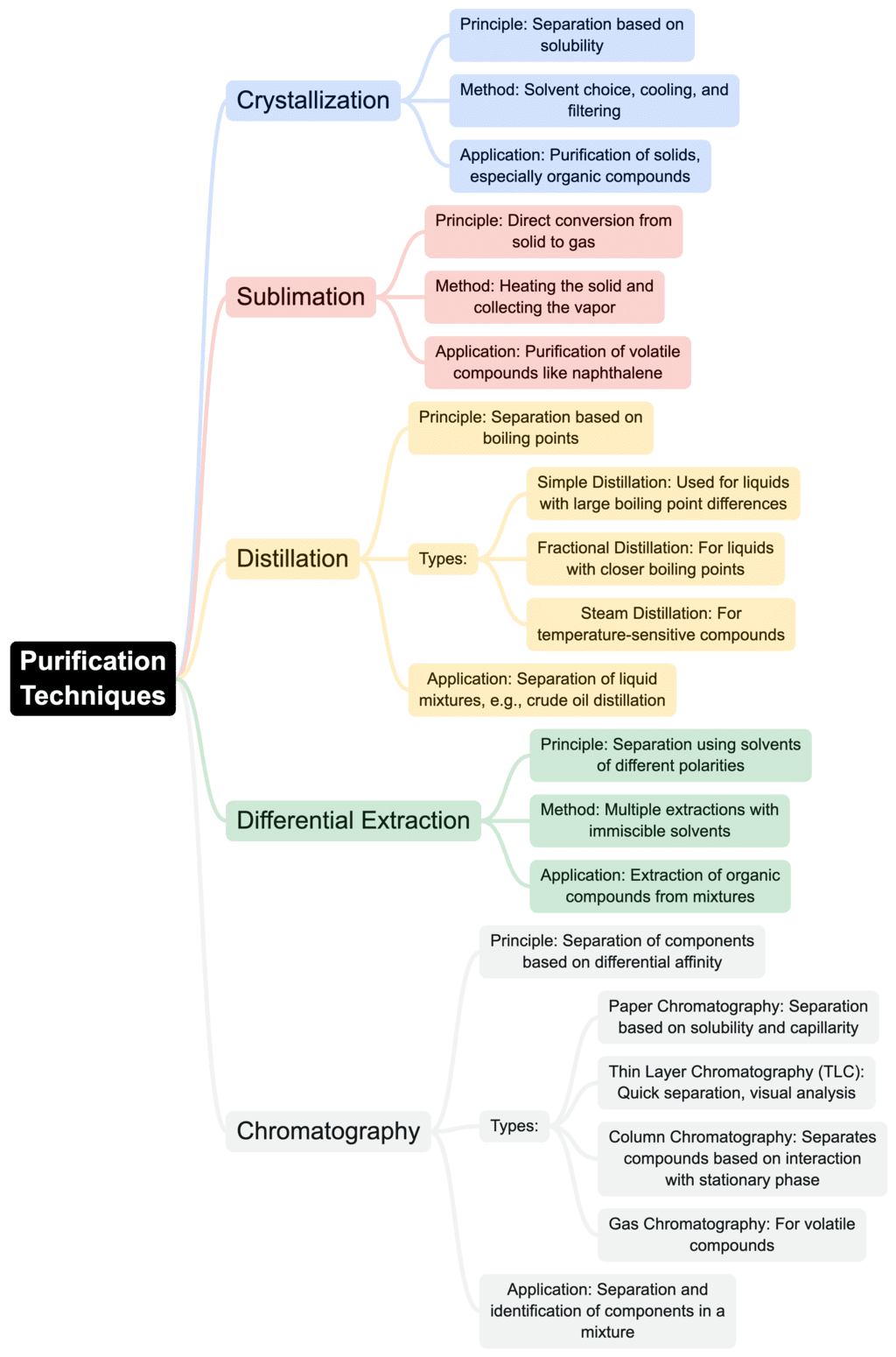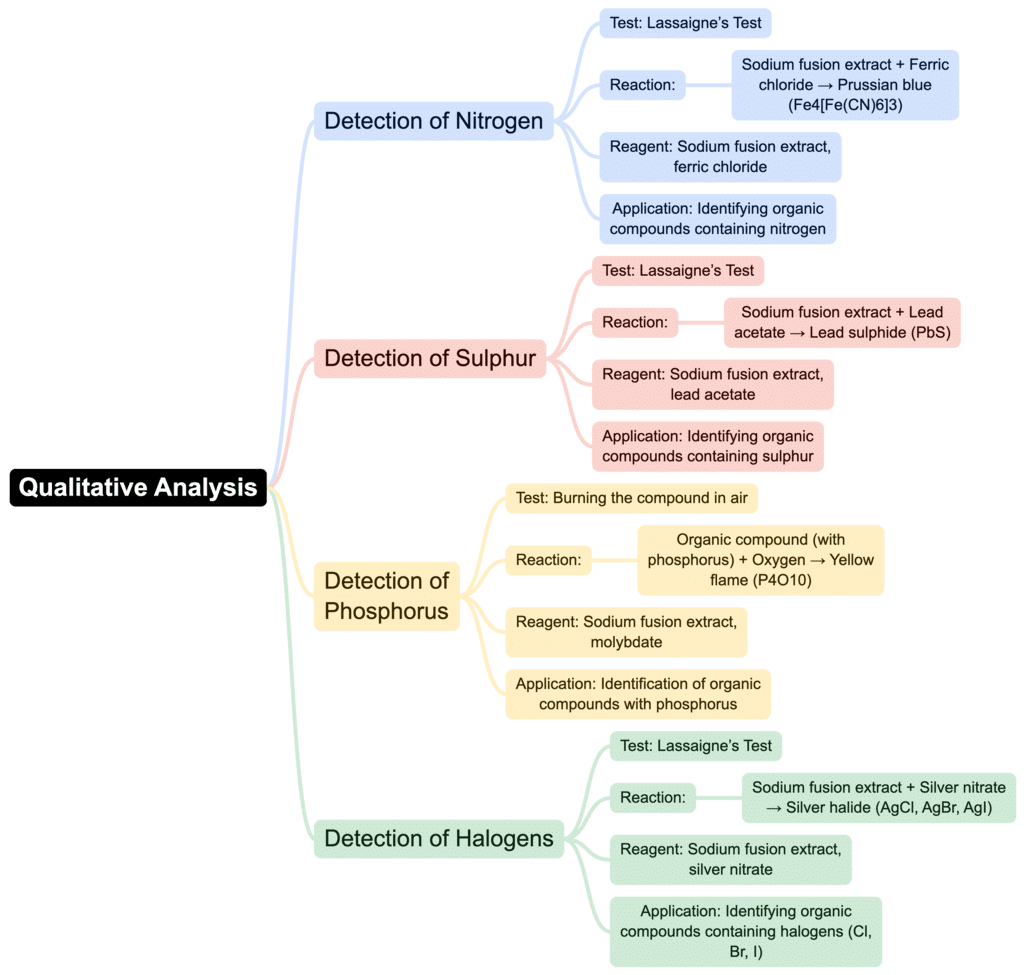NEET Exam > NEET Notes > Chemistry Class 12 > Mind Map: Purification and Characterisation of Organic Compounds
Mind Map: Purification and Characterisation of Organic Compounds | Chemistry Class 12 - NEET PDF Download


The document Mind Map: Purification and Characterisation of Organic Compounds | Chemistry Class 12 - NEET is a part of the NEET Course Chemistry Class 12.
All you need of NEET at this link: NEET
|
75 videos|278 docs|78 tests
|
FAQs on Mind Map: Purification and Characterisation of Organic Compounds - Chemistry Class 12 - NEET
| 1. What are the common methods used for the purification of organic compounds? |  |
Ans. Common methods for purifying organic compounds include recrystallization, distillation, chromatography (including thin-layer chromatography and column chromatography), and extraction. Each method has its specific applications based on the properties of the compounds involved.
| 2. How do you characterize organic compounds after purification? |  |
Ans. Characterization of organic compounds can be done using various techniques such as NMR (Nuclear Magnetic Resonance) spectroscopy, IR (Infrared) spectroscopy, UV-Vis (Ultraviolet-Visible) spectroscopy, mass spectrometry, and elemental analysis. These methods help in determining the structure, functional groups, and molecular weight of the compounds.
| 3. Why is recrystallization a preferred method for purifying solids? |  |
Ans. Recrystallization is preferred for purifying solids because it separates compounds based on their solubility. It allows the desired compound to form pure crystals while impurities remain dissolved in the solvent. This method is effective for achieving high purity levels.
| 4. What role does chromatography play in the purification and characterization of organic compounds? |  |
Ans. Chromatography is a vital technique in both purification and characterization as it separates components of a mixture based on their different affinities to a stationary phase and a mobile phase. It is widely used to isolate pure compounds and analyze their composition and properties.
| 5. What safety precautions should be taken during the purification and characterization of organic compounds? |  |
Ans. Safety precautions include wearing appropriate personal protective equipment (PPE) such as gloves, goggles, and lab coats, working in a well-ventilated area or fume hood, and properly handling and disposing of chemicals. It is also essential to be aware of the hazards associated with specific compounds and to have safety data sheets (SDS) available.
Related Searches





















